攻殻機動隊 M.M.A. - Messed Mesh Ambitions_
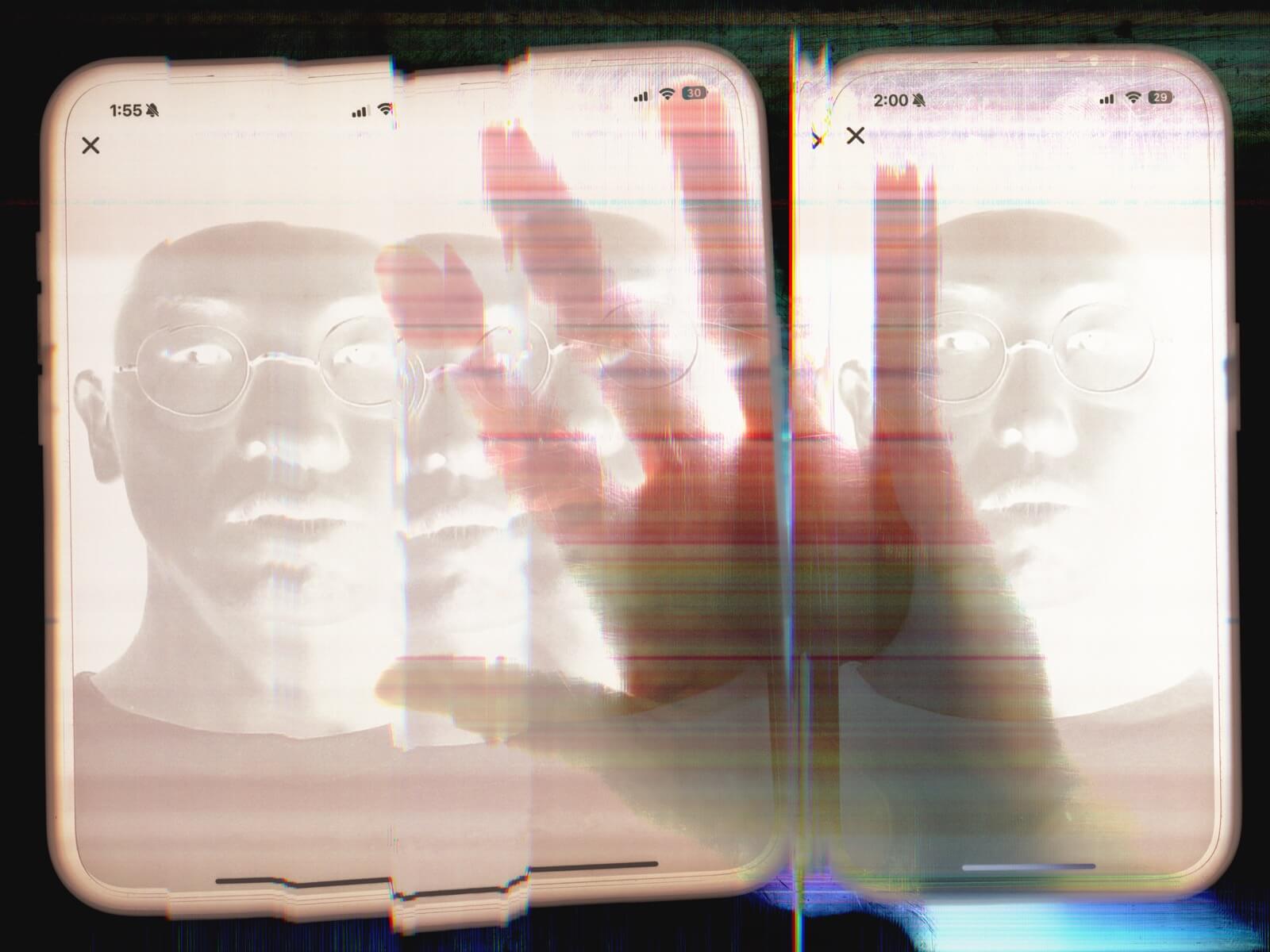
This Is My Body—Or, Time for Tachikomas
[Credits]Text_Hideaki Tazaki
Images_Kenji Chiga
More than any other author, Hideaki Tazaki’s body of works are written so perfectly for the purpose of an oblique perspective on Ghost in the Shell that one might almost imagine they were written toward that end.
Yet in fact, Tazaki’s past works have made almost no direct mention of the series. Even so, Tazaki’s works as a scholar of gender and sexuality—which have stood at the crux of dualisms like sadism and masochism, action and inaction, violence and love, self and other, and individual and collective and mediate their polar opposites with profound ingenuity—also resonate deeply and lewdly with the most radical elements of the world of Ghost in the Shell.
In the past, Tazaki has said the following about his reasoning on the theoretical significance of sexuality. “Because it’s the real part of us that allows us to survive by converting pain into pleasure and hatred into love. To take it a step further, it’s where both individual and collective take form.”
And once again, as Tazaki dives back into exploration of the formation of the individual and collective, his choice of conspirator in this project is that same bizarrely cute, confused, and mascot-like presence from S.A.C. that brightens up the hard-boiled Public Security Section 9: the blue Tachikoma think tanks.
[Contents]
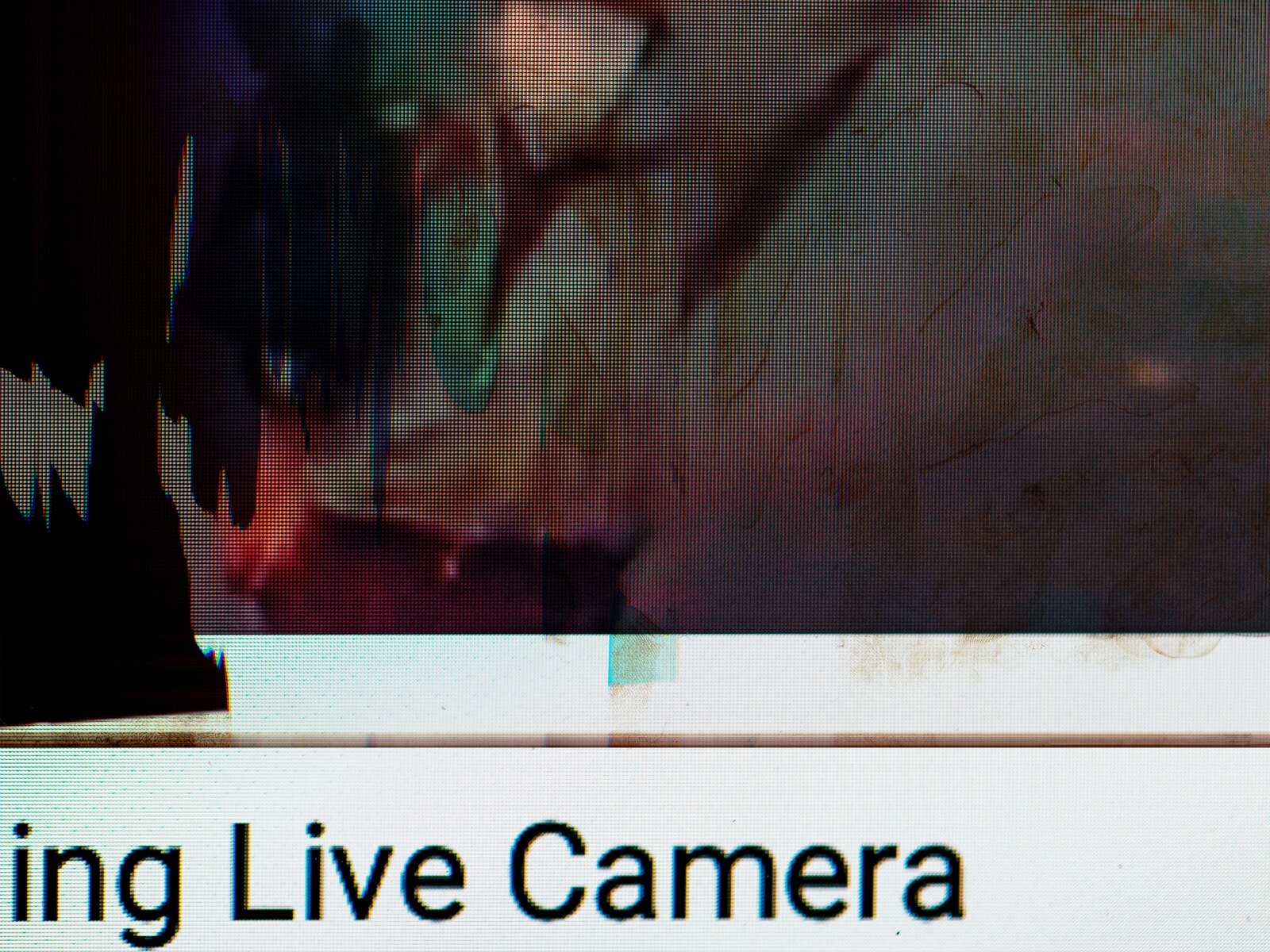
The Tachikomas’ story
Kenji Kamiyama’s TV anime series “Ghost in the Shell: Stand Alone Complex” (both seasons one and two are herein referred to as “S.A.C.”) tells the story of the Tachikomas.
At the end of the story, the Tachikomas’ act of self-sacrifice is indisputably the decisive, critical element in averting catastrophe. This is a variant on the type of story in which a character belonging to the periphery dies to save the lives of characters belonging to the mainstream (such as Black Widow in Marvel’s Avengers. It is also a reenactment of the events of the film Blade Runner (1982), in which the leader of the replicants, played by Rutger Hauer, spares the life of Harrison Ford’s bounty hunter, who had been “decommissioning” the replicants remorselessly until that time (surpassing humanity in empathy—the only distinguishing trait between humans and replicants—immediately after surpassing their creator intellectually).
But even more importantly, the Tachikomas also embody the series’ themes of “the individual and collective.” Philosopher Stanley Cavell identifies the specificity of TV as a medium as seriality, or in other words, that TV is always “to be continued.” And within S.A.C., it is the Tachikomas that embody seriality both in the series format and the story itself.
Within the works of Masamune Shirow, borders between individuals and nations persist even in a fully interconnected world. And so it is that S.A.C. is also the work to explore the themes of Ghost in the Shell most overtly, especially in relation to seriality.
Technology and body schema
Bernard Stiegler’s philosophy as a theory of technology provides us with the critical means to understand S.A.C.
And as noted by Stiegler’s primary reference, the archaeologist and paleoanthropologist André Leroi-Gourhan, modern humanity is distinguished by the externalization of memory. Modern humans have come to store our past outside our bodies, in the form of memories we record with various tools.
Our bodies are our temporal interfaces with the past and present (whether that is through individual physical experiences, or genetics inherited from our ancestors), and are the product of negotiations between our memories and the environment. And human beings are distinct in that we must physically access our external memories through our bodies. Whether by using language or various other tools, we all must learn how to do this. We also must synchronize ourselves with the way a tool was used in the past, in order to learn how it is used in the present. Yet the tool’s past is of course distinct from our own personal pasts. In using a tool, I must synchronize my present with the past of someone other than myself, who is both anyone and no one at all (the French “on”), while remaining unable to live that past directly. In this way, the present steadily separates itself from the past to take form. In other words, if we look at learning to use a tool as transferring identity from “someone else’s” to “mine,” then we see events taking place in the proper (or improper) arrangement of environment and tool.
The temporal nature of this learning process is also fundamental to our physicality. The fact that we are corporeal beings (including the ambiguity of having/being a body) does not mean that we instantly sync with the context for tool use and in relation to it (like downloading and installing software or other data); the distance between our reality and synchrony makes some diachrony inevitable. And the diachrony that separates me from synchrony is itself the process that gives rise to the self. The singularity of the self can be found here, in our hands as they take up tools, and our vocal cords and expressions as we speak. This gives the self a specific temporal nature; to put it simply, we assign our own individual time to ourselves. The coexistence and distinction of this synchrony/diachrony lies at the root of both individual and collective, and it is this self-assignment of time that delineates the temporal nature of the individual and the history of the collective. Our clear sense that we ourselves are the ones imparting time to ourselves and that the time we live is our own is at the heart of what Stiegler calls “primordial narcissism.”
However, we must not forget that this process of synchrony/diachrony is something that arises in relation to the tools that serve as our body’s external memories. This is to say that it is not a purely “mental” phenomenon; it must be premised on a body schema that mediates between the self and the tools. Just as some note that their sense of physical width expands to that of the car when they drive, and their sense of touch extends to its tires, our body schema distorts and extends beyond (or sometimes within) the skin that serves as the boundary of our bodies. In our era, many people are constantly connected to the internet through their smartphones. And no one actually knows how this impacts our body schema. Nonetheless, we remain trapped in the humanoid body image we have always had.
To my understanding, though it is an extremely pressing issue, there has been little progress made towards clarifying the contemporary body schema (and its divergence from body image), and even structuring questions on the topic appropriately entails uncertainties. But there are those the expressive sphere who have led the way in asking such questions. David Cronenberg gave the inquiry form in his various films Videodrome, Scanners, The Fly (1986), Existenz, and Cosmopolis. In the realm of anime, while viewers can spot questions about the retention of human form in the Evangelion series, unsurprisingly, we have had to wait for Kenji Kamiyama’s S.A.C. for a work addressing the issues of constantly-connected bodies.
The predecessors to Kamiyama’s S.A.C. (Mamoru Oshii’s Ghost in the Shell and Innocence) establish a variant form/matter diagram with the duality of information and matter. As stories, they are propelled by contrast between the poles of “giving up one’s body (or human form, and thus becoming one with the net)” versus “retaining human form (and thus staying embodied).” And story is driven by the assumed temporal nature of the opposition between the embodied present and the disembodied future. However, this itself cannot pose a question toward the shifting of body schema in relation to the pre-existing poverty of primordial narcissism.
In contrast, Kamiyama’s S.A.C. does not pose a simple binary choice between a body or the net. Its attention is instead focused on the shift in the temporal nature of body schema, which mediates between matters of the self and tools. (This is also likely the reason that the subsequent Eden of the East would focus on augmented reality instead of virtual, and on physical labor.)
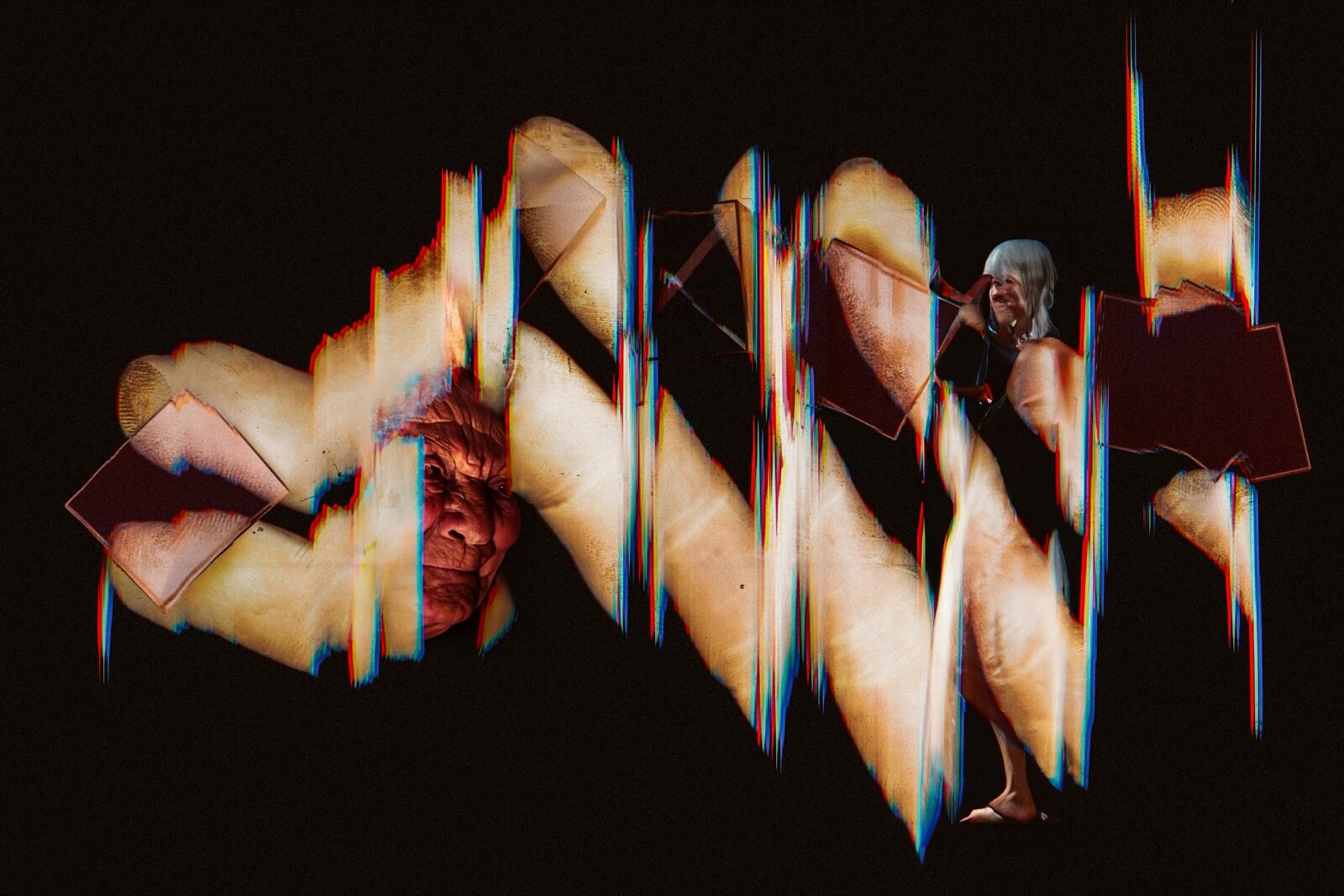
The future of primordial narcissism and megamachines
Our ability to impart time to ourselves—or in other words, the temporal nature of tool-related learning—is above all a property of the body. This is the origin of the issue. The tools that we bring into ourselves are interconnected. These can be more than simple items, like a hammer you simply pick up. They could be a wrench and screw driver set on a workbench, or a conveyor belt moving at a set speed. Essentially, the tools can be entire mechanical systems. And these mechanical systems can incorporate bodies other than my own.
There is no better reference when considering machines than Lewis Mumford’s megamachines, which he wrote of in The Myth of the Machine. Mumford didn’t consider the industrial revolution to be an unprecedented event in the human experience. He argued that ancient monarchies had been building massive machines out of humans for ages. It was simply that these machines were invisible to use in the present due to their lack of metal frames and gears and other parts. Megamachines used the king as a motor (an Aristotelian prime mover in this case), while consisting of varied precision parts (a system of division of labor consisting of people with specialized functions). We sometimes envision some military machinery, irrigation systems, or other civil engineering works (such as the building of the pyramids) as machines, but there is no need to consider the machines solely by function in this scenario. They are all “megamachines,” collectively.
Both these ancient megamachines and the machinery of the industrial revolution were extensions on human muscle, allowing people to accomplish what one person could not on their own. And as parts of those mechanical systems, humans transform themselves from “someone” to their own self in a way which is also vital to achieving their desired functions, because they need to keep the machines running smoothly. And in this fashion, the laboring body of “I” will live through its own time while being fully embedded in these machines.
In contrast, the “me” that acts as a joint in the mechanical system is actually superfluous to a megamachine. In brief, that is due to “my” ability, or the self’s ability to revoke consent to the mechanical system. To drive a megamachine or the mechanical systems of the industrial revolution, the dimension of the self we call “me” cannot be bypassed, whether driven through persuasive words, financial agreements, or threats of violence and terror. This is why mines and plantations could never fully eliminate the threat of slave revolts in past eras. Primordial narcissism—our sense of self and sense of uniqueness as an individual—is required for the function of a megamachine, but it can also be a cause of its malfunction.
However, primordial narcissism begins to become impoverished in a hyper-industrial society, where individual consciousness is marketized and controlled by industries. Stiegler contended that advances in media technology would eventually produce what he called “temporal objects.” In an era when temporal objects like replayable video records of the past are linked to the bodies we call our selves, then power and authority can act on the body schema on a perceptual level, without giving orders or instructions directly to the subject of “I.”This is the process that gives rise to what Gilles Deleuze referred to as societies of control.
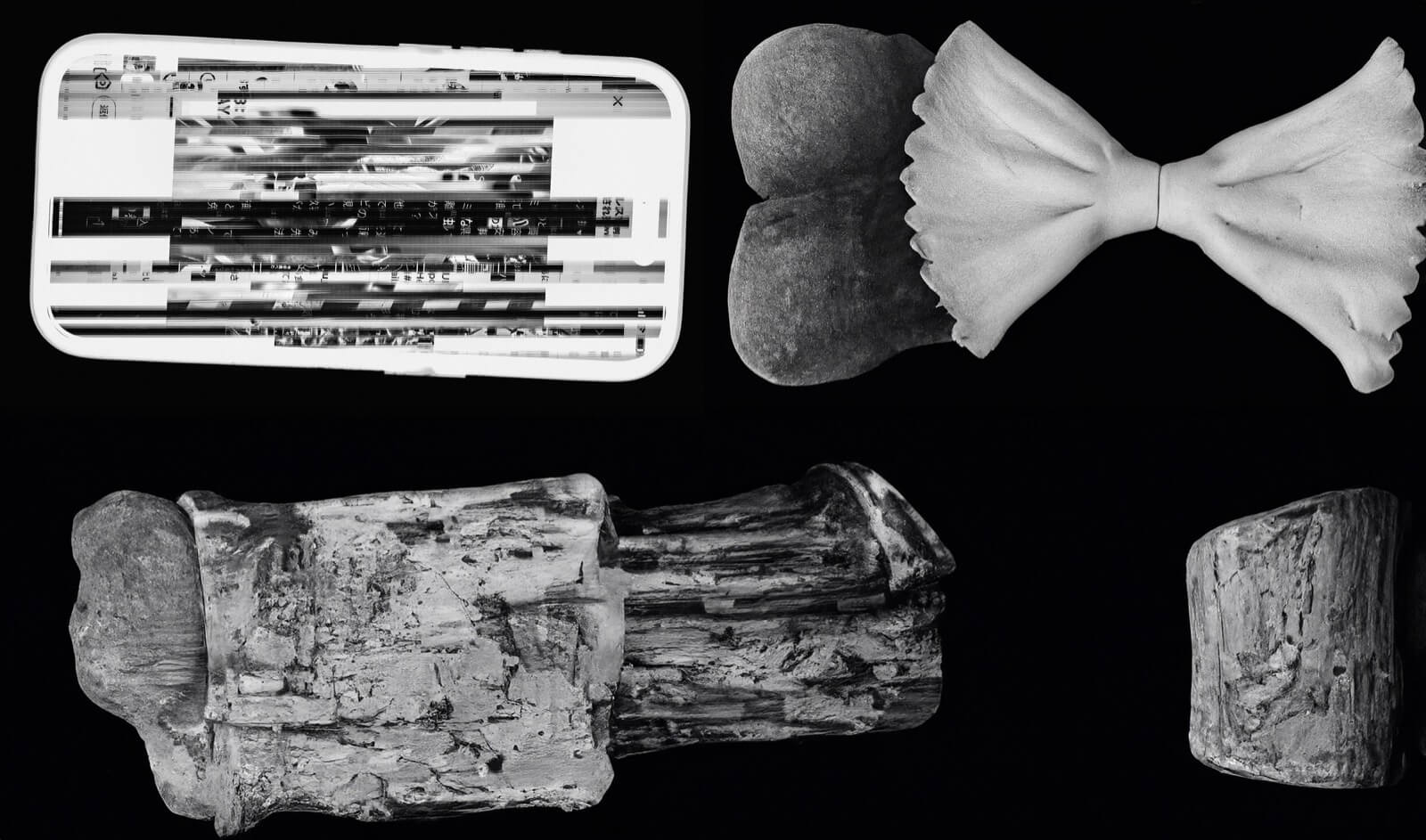
Control societies and temporal object production
For a play, it could be one the playwright had finished, with the script already in print. For a concert, it could be one notated on sheet music in circulation. In both cases, the actors and performers bring external memory to life in the present. The temporal present is shared with the audience. The audience sense what they see and hear as happening in the present, and live the time as themselves, being who they are in the process.
However, Stiegler considered video and audio recordings to be the textbook temporal objects, and held that they were automated replays of someone else’s memories and thus their past, and not our own. This eliminates the need to live that past as our “own” present. Is this my memory, or someone else’s? Omitting the time that separates “someone” from the self causes the two to be superimposed on each other.
This is the danger of the primordial narcissism that Stiegler references. When this happens, people begin to act out in order to forcibly distinguish themselves from others. This is my memory and no one else’s, they say. This is an attempt to convince themselves that they are undeniably the one at the origin of the memory. “I am myself, the real one, the original Laughing Man,” they declare.But of course, both the memory and belief are a copy of a copy, no more than a dodgy mimicry of the original. I cannot definitively convince anyone else, including myself, that I am in fact myself.
Or take serial killers for example. They attempt to reclaim their own mortality as a means of denying that they are mass-produced, standardized units in a series, but are unable to distinguish the self from the other, or their own death from another’s, and end up repeatedly killing. Multiple serial killers have reflected that, “I tried to kill myself, but each time, someone else died.”
Body schema works to integrate both sensation (inaction) and movement (action). To be more precise, the schema is where inaction is converted to action. This conversion occurs not in a place but in the self. However, digitalized network technologies make it possible to substitute an industrial product (programs to perform searches or replay memories) for synthesized operations that are thought to arise in the deepest parts of the self, such as recollection and perception. This robs the self of mobility and autonomy.
In the Ghost in the Shell series, Batou lifts weights unnecessary for a full-conversion cyborg to suppress the crisis of primordial narcissism. Batou treats weightlifting as an external memory, and a vital one in order to hold on to his individual identity. Lifting weights as a cyborg can’t restore his body schema from when he was organic, or replace his artificial body with the temporal nature of an organic one, but it can create a simulacrum without the original memories of a body in order to maintain continuity with the body he once had.
On that front, what is the relationship between the entity we call the self and a prosthetic body? I have already touched on the duality of being/having a body in the relationship between self and body. This is the issue that makes it impossible to clearly determine whether the hand I grip a tool with is my body, or whether the hand itself is the first tool I will be using from the perspective of my self. And of course, even if it is a part of my body, I can’t always move it exactly the way I want. If our bodies weren’t somewhat reminiscent of tools, we likely wouldn’t be able to grasp tools and would have never adopted them.However, there is still a boundary between body and tool.
For example, I wear glasses. I look at my computer monitor through them, use them to type on my keyboard, and essentially incorporate them into my body. But the same isn’t true of my computer monitor or keyboard. Indeed, the world forms a sort of “intenional arc” evoking a set range of potential physical actions, with endless overlapping layers from a circle that closes near my body to one that ultimately traverses the entire globe. However, there are seams along this arc (glasses as the boundary for my sight, tires as the boundaries of touch, or a game controller as the origin point for punches and kicks), and the points before and after them are distinct.
In the world of Ghost in the Shell, cyborg bodies are typically located on the closer side of these seams, on the side of the body, rather than across the seam on the side of tools. However, the presence of cybernetic technologies, or more precisely cyberbrain technologies means that the seam between body and tools is always mediated by set hardware. Moreover, beyond control through temporal objects, their constant internet connection makes it possible for them to be hacked in real time by top-tier hackers like the Laughing Man.From the perspective of a self that lives with cyberbrain technologies, the boundaries between self are as smoothly connected as those of the body or tools, meaning no one notices when there is an intervening presence.
This is also reminiscent of Deleuze’s societies of control. He borrowed the term for his “society of control” from William Burroughs. That fact tells us that drugs provide a critical perspective when considering societies of control. Drugs work directly on the nerves on a molecular level. In a very similar way, when under the authority of a society of control, the self is no longer an independent subject.A society of control can act on the individual through torture and other mechanisms that aren’t limited to merely changing the subject’s will (“How many fingers am I holding up?”) via representations, but can in fact work on a material level to control the nerves directly. This is control according to Burroughs, not Orwell.
In the world of S.A.C., people are controlled on a level separate from subjects and representations, through direct neural network connections and nanomachines instead of drugs. Rather than through a central presence like a king issuing commands in a unified structure (as in a megamachine), distributed commands over a network (which themselves exist as a sort of distributed representation) give rise to specific actions thanks to distributed processing. The self’s body schema is connected with a network without the self’s awareness, on a microscopic level of representation. Ghost in the Shell takes place in a world where even the self as a subject is undergoing a conversion into a tool through this sort of constant connection.

Time for angels and machines
In Christian theology, creation is generally taken to be a compound existence made up of matter and forms. Things (which is to say physical entities, like a dog for example) are a union of abstract shape (like a general dog form) and specific materiality, and neither materiality without form (including amorphous forms) or form without materiality can exist alone. However, even as a part of creation, angels were believed to be entities without form (called irreducible entities or monistic entities). These are beings of pure intellect with no materiality, which do not require sensory organs or the sensory representations they create in order to be aware of other things. More importantly, angels would not need sensory representation in the first place due to their lack of bodies. This would also mean that there would be no temporal element to learning for angels. Angels do not learn. They instantaneously know. For example, to know the value of Pi at 100 million digits in base 10, a human would need to calculate it. However, a being of pure intellect like a god or angel would simply know the answer immediately.
This is depicted in a scene in S.A.C. 2nd GIG, where Batou is using his opto-cam, making him invisible as he appears shown from behind, with his hair tied back. This scene is a reference to one with the angel Damiel, played by Bruno Ganz in the 1987 film Wings of Desire from director Wim Wenders. In it, angels exist solely as observers, able to know the world but not intervene in it directly. Following in the footsteps of his predecessors, Batou takes on the role of a guardian angel that simply observes, and nearly allows the suspect in an international bombing incident to escape.
But neither Batou nor Motoko Kusanagi actually equates to the role of an angel in S.A.C. That would be the Tachikomas.
Unlike angels, we humans have no choice but to rely on sensory representations. For example, we can’t access a digital manga or book simply by downloading it; we need to convert it to analog first, whether through a monitor or a reader function. In contrast, the Tachikomas can simply download the digital data, and can share it with other Tachikomas without any data loss. Of course, the Tachikomas are there to support Public Security Section 9, so they have arms, legs, and various sensors to let them do more than simply observe. And the data they take in through their sensors is likely closer to human sensory representations than to those of an angel.
Even so, the fact that the Tachikomas had their memories merged and synchronized after each mission to prevent distinctions between them (at least in season one, “The Laughing Man”) is quite reminiscent of angels. And that also reminds me of the debates that took place n medieval Europe over whether individual angels were beings of pure form. People typically believe that matter is core to the formation of individual beings. For example, a dog’s form corresponds to the breed of dog it is, and individual dogs take form from the combination of matter they contain. And thus logically, matter is part of the principle of individuation.
Now let’s try applying some of this thinking on matter and angels to Tachikomas. When their memories undergo routine synchronization, differences between the individual Tachikoma’s physical bodies are erased. In other words, matter seems irrelevant to the existence of Tachikomas as individuals, since they can be restored to an existence as form alone through synchronization of their memories. It seems that the souls and bodies of the Tachikomas align through their synchronization technology, as it removes individual body-based distinctions in the same way these would not be present in formless angels. It is also clear that this synchronization makes it impossible for them to distinguish which individual unit met a girl when hunting for a dog, though, or even which unit’s memory the event came from. The Tachikomas are beings that do not experience primordial narcissism—they do not feel the sense of being a unique individual.
However, even as they underwent repeated synchronization, the Tachikomas also inevitably experienced an individuation process. For example, one unit begins to enjoy reading paper books in analog through its optical sensors, rather than simply downloading the data from them. The key point here is “learning” over time in a physical fashion, rather than instantly acquiring knowledge in the manner of an angel. The separation between “known” and “unknown” digital data and the aforementioned atemporal “knowledge” is time. However, the “learning” and “practice” accompanied by physical sensory representations begins with the physical acts (or has already begun with them) and ends with them as well (or likewise has already ended with them). The temporal nature of these states can be seen in the state of “learning” that they comprise. The Tachikomas in S.A.C. are not angels, but rather act as agents to resist an angelic interpretation of time (synchrony) within the story.
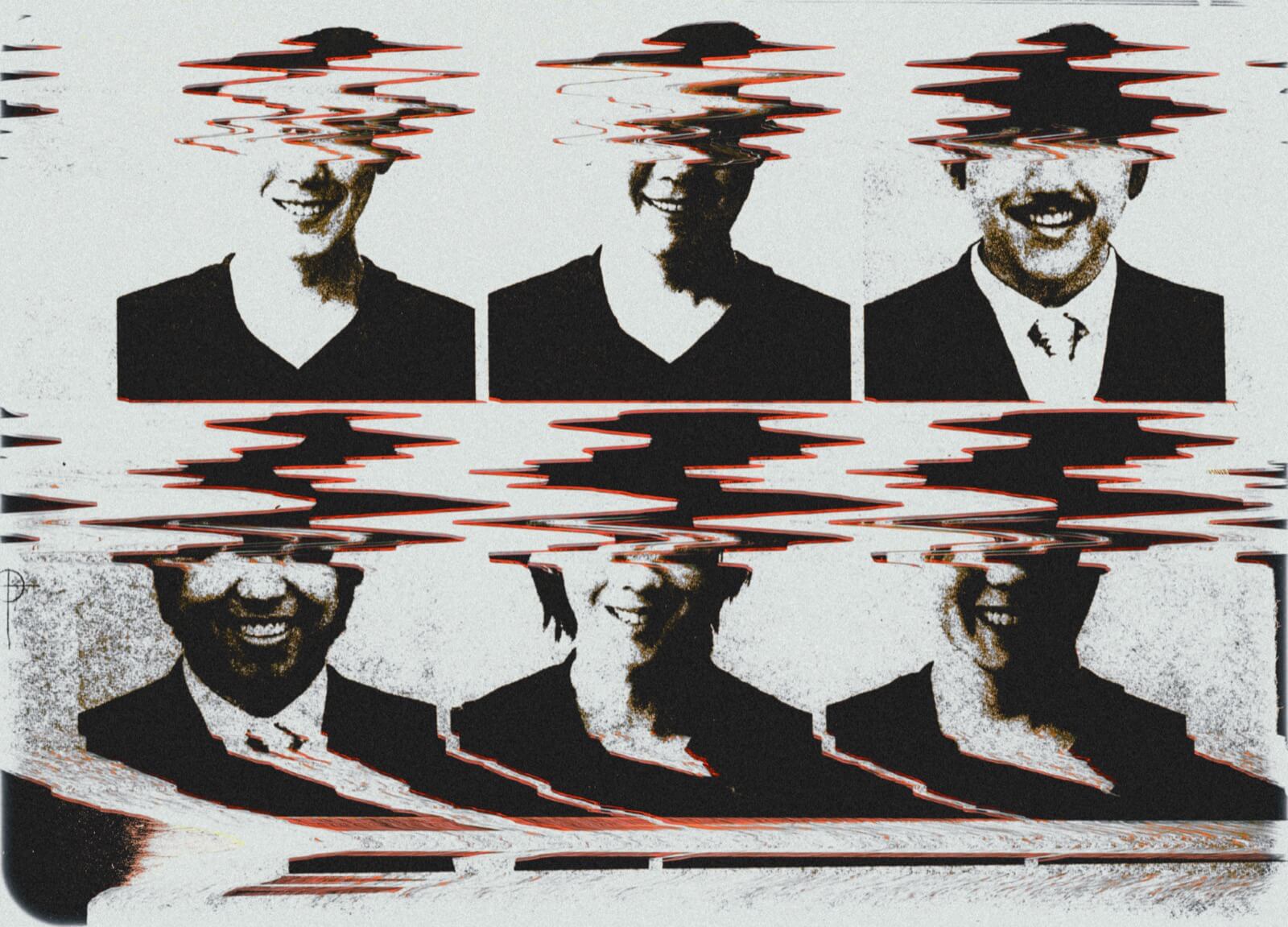
Exploration of physicalization while always online
In contrast, humans with constant network connections are unable to endure the breakdown of primordial narcissism, and begin acting out by attempting to resist and separate their modern individual memories from the concurrent time. Meanwhile, other humans are tempted by the prospect of unity with the net, and rush to go beyond a constant connection (under which individual bodies still exist, and there is no elimination of borders between individuals) and fully abandon their own bodies.
In S.A.C. 2nd GIG, the character Kuze is the leader of the refugee uprising. He is a charismatic presence capable of captivating the poor refugees without cyberbrains, and a revolutionary with unshakeable beliefs. Kuze reveals the aims of his revolution to Motoko, arguing for humans to give up their bodies and immigrate to the net as ghosts (in other words, using some method to immigrate without losing individuality). Immigrating from a corporeal existence toward a non-corporeal one on the net is defined as moving from a lower to a higher level of existence. The story demonstrates an understanding of its temporal nature, that this move would be an integration of individual and group, and of individual, temporal yet collective history. With a nuclear strike inbound on the refugee district, Kuze makes the agonizing decision to move the refugees’ ghosts to the net, and Motoko gives the Tachikomas an order to secure space for 3 million people’s data on the net. With no guarantee of success, she seems to believe Kuze that “even if we fail, we’ll go down in history as great visionaries taking steps toward a new stage in human development.”
But the Tachikomas resist Motoko’s orders, and knowingly ram the nuclear missile with the artificial satellite housing the servers they reside on, saving the refugees as physical beings.
Kuze is actually the closest to aligning with the G.I.S. narrative in S.A.C. The story appeals to Motoko as well, and she inevitably brings a dualistic structure (status quo) to S.A.C. in regard to body/net and matter/data. In contrast, the Tachikomas choose to defend their story of the exploration of physicalization under constantly-connected conditions.
Indeed, this is not a story that offers an “outside” that can provide criticism of the entire structure, or an exit from the control society woven from constantly-connected bodies.However, as pioneers grappling with the question of how to explore the temporal nature of memory in relation to bodies and (external) memory without leaving their society of control, the tale of the Tachikomas represents individuality equaling collective, which is of immeasurable significance. At the very least, watching through S.A.C. tends to leave one with serious thoughts on whether they have been examining society, technology, and the body properly.
Of course, there is also a need to re-examine important but unasked questions. Of note, the gender norms in S.A.C. are extremely traditional. The operator androids are all modeled on women, while the secretary androids are all male, and the cast is quite male-centric with the exception of Motoko Kusanagi. This is at least equal in extent to present-day Japan, even allowing for Kayabuki (“Japan’s first female Prime Minister” in the second season), Togusa’s wife, and other minor characters. On this point, the Tachikomas are unique entities (even using the [conventionally masculine] first-person pronoun “boku”).
This still leaves the issue of angels and matter. To create duplicates of themselves (or reproduce), embodied individuals made of matter need tools; specifically, other individuals of the same species. To put it another way, an individual is “sexué” due to the materiality that is foundational to individuality. Inversely, ”sexuation” is proof that an individual is embodied and material. The anomaly of the Tachikomas’ gender cannot be ignored given its connection with physicality and (more than genderization) sexuation, but all gender and sexuality within S.A.C. is primarily hinted at and not addressed head-on, including Motoko’s sexuality. So how is non-binary “sexué” that cannot be categorized cleanly by gender and sex incorporated into body schema?It goes without saying, that’s an issue we all (or rather, me pesonally) must explore.
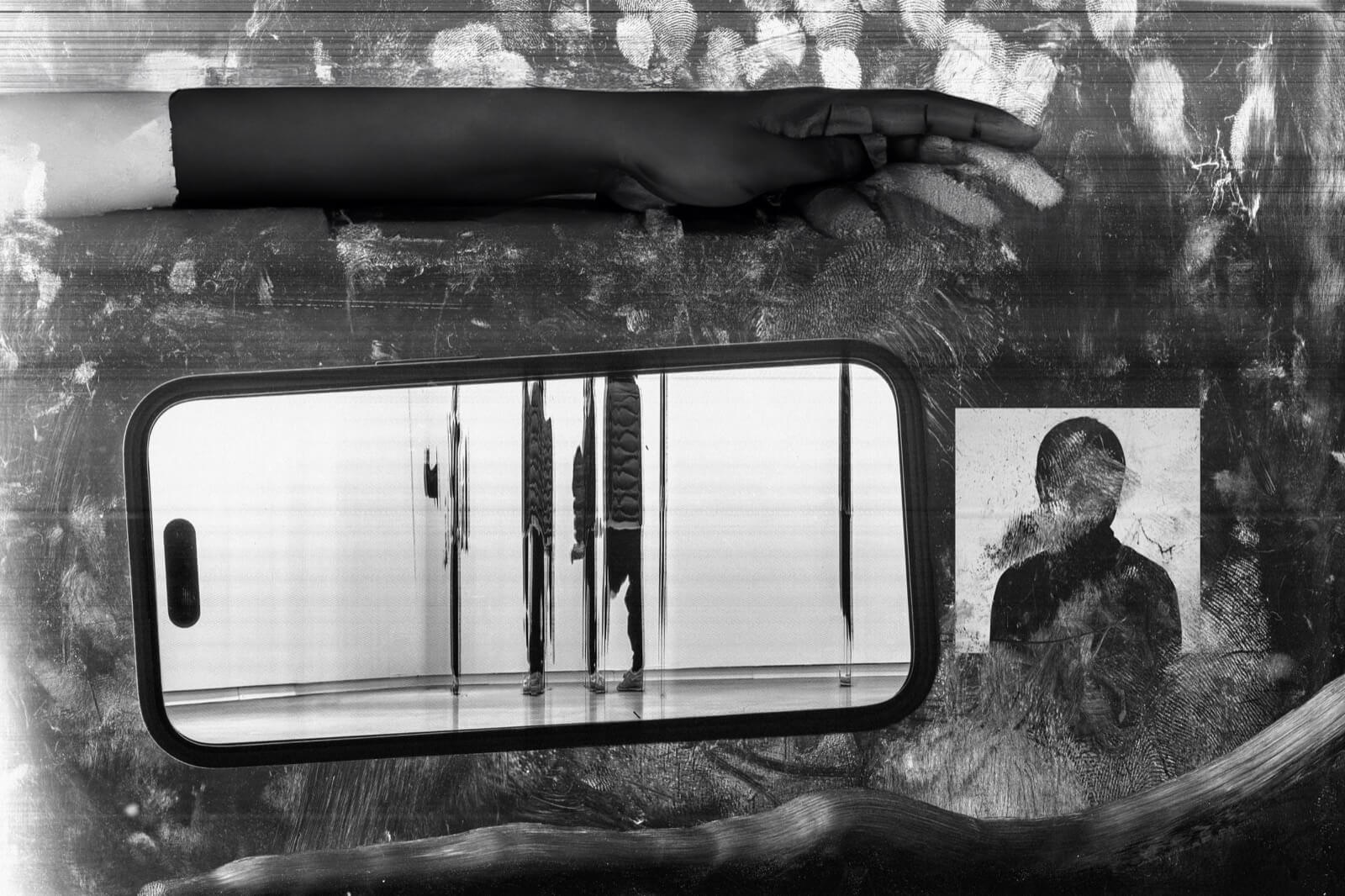
[References]
●Bernard Stiegler. De la misère symbolique: Tome 1. trans. Gabriel Mehrenberger, Maki Mehrenberger (Shinhyoron, 2006)
●Bernard Stiegler. Technics and Time, 1: The Fault of Epimetheus ed. Hidetaka Ishida, trans. Kenji Nishi (Hosei University Press, 2013)
●Thomas Aquinas. Summa theologica, trans. Saburo Takada and Teruo Kusaka (Sobunsha On-Demand, Kodansha, 2021), the Supplement q. 44-66.
●Lewis Mumford. Myth of the Machine: Technics and Human Development trans. Kiyoshi Higuchi (Kawade Shobo Shinsha, 1971)
Hideaki Tazaki
Specialist in Post-Colonial Queer Theory, Body and Social Theories, and Body Politics Theory. Professor at Rikkyo University College of Contemporary Psychology. Born in Tokyo in 1960. His works include “Gender and Sexuality” (Iwanami Shoten, 2000), “A Collective of the Inept” (Miraisha, 2007), and his translated works include “Tarrying with the Negative: Kant, Hegel, and the Critique of Ideology” (Slavoj Zizek, co-trans. Hiroshi Sakai, Ohta Publishing, 1998), among others.

